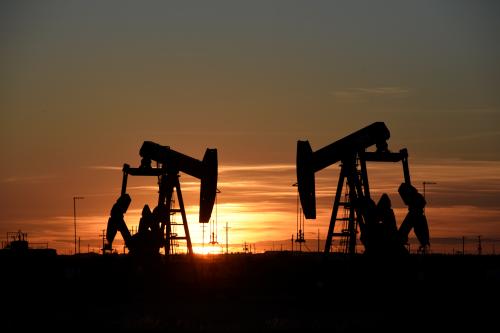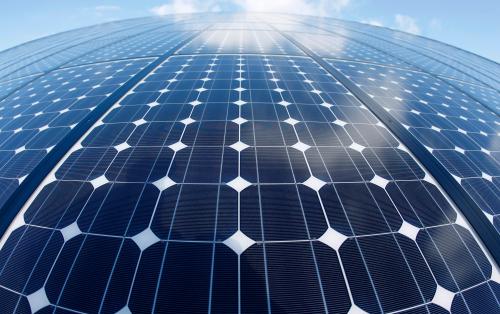The United Nations’ annual climate change conference, COP28, will begin on November 30, and this year’s focus is on the five-year global stocktake. Through this process, not only do we measure where we are, but, hopefully, also ratchet up efforts and official pledges to limit average global warming to 1.5 degrees Celsius. Unfortunately, as the U.N.’s 2023 Emissions Gap Report points out, we’re falling even further behind schedule — instead of lowering emissions, global emissions are still rising.
A number of international and expert bodies like the International Energy Agency and the Energy Transitions Commission have laid out plans to limit emissions. A widely publicized effort is the Intergovernmental Panel on Climate Change’s (IPCC) special report, which put out a stark timeline for the world to reach net zero emissions by 2050 in order to limit global temperature rise to 1.5°C. This galvanized many countries to announce plans to reach net zero emissions by 2050.
Unfortunately, there are two problems with these announcements. First, even if a country does bring its net emissions to zero by 2050 (and many are behind schedule), this says nothing about its cumulative emissions, which depend on the trajectory of the emissions curve. A less well-publicized statement from the IPCC report was that keeping temperature rise to under 1.5°C requires emissions to fall by 45% between 2010 and 2030, along the way to zero emissions by 2050. Instead, global carbon dioxide emissions have risen by about 10% since 2010. Second, the report says little about apportioning the remaining carbon budget across nations.
Both issues come to the fore when we apply lenses of fairness and practicality. Which countries need to reduce emissions, by how much, and by when? Is “zero” the only thing poorer developing countries should be focused on today?
A fair pathway to net zero emissions
If the world must achieve zero emissions by 2050, it’s impractical and unfair to require all countries to reach that goal simultaneously. Countries that are poor and have low per capita emissions are not in a position to zero their emissions by 2050 because they must still grow their energy consumption, including from fossil fuels, to develop. Thus, achieving net zero global emissions by 2050 — or the equivalent allowed cumulative emissions — only works if high-emissions countries bring their emissions to zero sooner than 2050.
Instead of all countries following the same path to zero emissions, we need a framework that is fair and practical and recognizes differences across countries. Poorer countries1 should dramatically reduce most — but not necessarily all — of their prospective emissions as soon as possible, similar to how the Pareto 80/20 rule helps maximize bang-for-buck.
This is analogous to “flattening the curve,” a phrase popularized during the COVID-19 pandemic. Poorer countries can reduce emissions growth faster up front and then plateau their emissions, even if a small emissions tail lingers beyond the notional date of 2050, keeping the area under the curve the same (or even lower).
In contrast, high-emissions nations cannot leave an emissions tail as we don’t have the global carbon space. They can also afford to aggressively move to zero emissions by or even before 2050. Their efforts to reach zero emissions will help the poor by innovating and paying the early adopter premium for new technologies like green hydrogen and battery storage, the benefits of which would trickle down to everyone.
The reason we need such differentiated goals across countries is that it is much more expensive to eliminate rather than merely reduce emissions. Lowering emissions is significantly cheaper than getting rid of the last 10% or 20% of emissions within a sector (the so-called tail of emissions), even if it’s an “easy” sector to decarbonize like electricity.
The need for reliable electricity
Electricity is the most important and also the highest emissions sector in most developing countries. In looking to decarbonize this sector, the good news is that wind and solar are very cheap. However, the bad news is that this is only the case when one doesn’t need storage, which is expensive and will be required as wind and solar grow in share. On a per kilowatt-hour basis, storage is multiple times the cost of solar today,2 and it is also more expensive than producing electricity from fossil fuels (absent a carbon price).
While all countries are grappling with solar and wind’s well-known variability, developing countries have an additional problem: they lack sufficient alternative installed capacity that could provide a buffer to that variability. Rich countries have sufficient electricity capacity, but the poor still need to grow. In many African countries, for example, per capita electricity consumption is lower than that of a single refrigerator in the United States.
As developed countries expanded their renewable energy capacity, many of them also kept or even grew their natural gas electricity capacity, which acts like an insurance policy. Most developing countries lack such a buffer, and there is pressure, under “no carbon” mantras, to not finance fossil fuel generation in poor countries. A back-of-the-envelope calculation shows that if you were to supply the roughly 1 billion people who lack electricity connections or quality supply with 35 kWh/month per home, even with 100% coal-based electricity, this would only be equal to about 0.25% of today’s global emissions. And new grid supply wouldn’t be 100% coal — solar is far cheaper and able to meet at least a fraction of grid-based supply.
But before worrying about the hard-to-abate tail of emissions, poorer nations should aim to aggressively decarbonize, say, 70%-80% of upcoming electricity sector emissions. 100% decarbonization would require significant electricity storage and grid overhauls, more so if we need to worry about the worst-case scenario of high summer heat with low wind for days on end. My team’s analysis of India’s power grid in 2030 shows that a disproportionate amount of storage capacity would be needed to ensure supply reliability for the brief periods of highest demand (assuming one couldn’t expand fossil fuel supply). Not worrying about eliminating the tail of electricity emissions can also allow the poor to prioritize the electrification of sectors like transportation and cooking that directly use fossil fuels today.
The right way to help
Developing countries will need help to decarbonize faster. Some zero-carbon projects are already bankable (viable) today, but more rapid decarbonization will require paying a premium. The poor cannot afford this, and so the rich will need to step up support. At COP15 in 2009, rich countries pledged $100 billion per year of climate support by 2020, but the deadline was subsequently extended to 2025.
In addition to problems with timelines, there are concerns over the form of support. Climate support for the poor must be offered as grants or discounted loans, and not traditional funding for projects — like setting up a solar farm — that are already bankable under traditional funding. If climate experts ask for “additionality” when measuring carbon abatement (like not counting the preservation of a forest that was not going to be cut down anyway), we also need additionality in finance (or funding that wouldn’t have materialized otherwise). Such finance must also not allow for accounting tricks or double counting.
Market viability provides an interesting metric for action. In many countries, we’re not even doing what is financially viable today in terms of emissions reductions: e.g., we’re not scaling up wind and solar nearly fast enough, well before the point of requiring batteries. This requires attention to underlying issues such as counter-party risk (loss-making utilities), outdated grid management, hurdles for land acquisition, etc.
An emphasis on achieving “full zero” and “only zero” not only becomes a distraction but may also crowd out improvements in existing infrastructure that could raise efficiencies and lower pollution, such as cleaning up existing power plants. Such efforts could reduce local air pollution (a bigger worry today than carbon in many regions), and existing power plants could be retrofitted to be more flexible in their operations, which will be required for a future with a high penetration of intermittent renewables.
We can’t change the past, and this is one reason to focus on prospective emissions. If the rich enjoy the luxury of ignoring historical emissions (ideally, they shouldn’t, since “all carbon is equal”), they also need to accept that the poor will follow a phased approach, not just with emissions reductions before elimination, but, in some cases, a temporary rise in emissions. The poor can be even more aggressive up-front in return for breathing space to abate more difficult emissions down the road. If this means some growth in fossil fuel use by poor countries, this shouldn’t be denied under climate absolutism.
-
Footnotes
- By “poor,” I explicitly also mean countries with low per capita emissions — thus, China doesn’t qualify.
- Figure 11 of Tongia (2023) converts the capital cost of grid-scale batteries to per kilowatt-hour costs; the capital costs of batteries are taken from Bloomberg New Energy Finance data, but NREL’s more recent “Cost Projections for Utility-Scale Battery Storage: 2023 Update” shows similar costs.







Commentary
The poor should control carbon emissions, but the rich must eliminate them
November 29, 2023